|
Wet Gas Corrosion Flow Loop #1
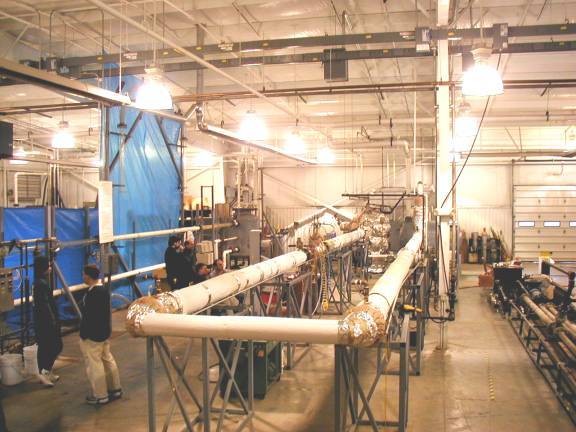 |
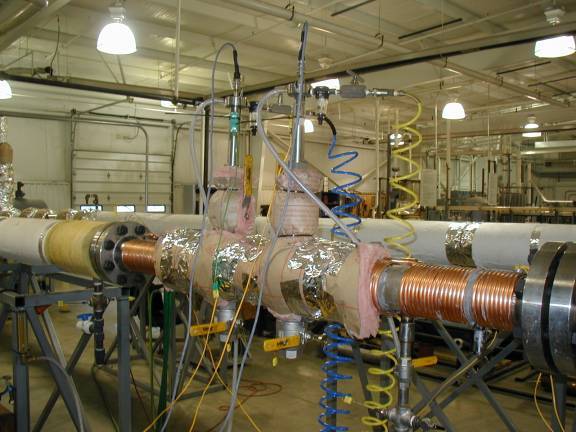 |
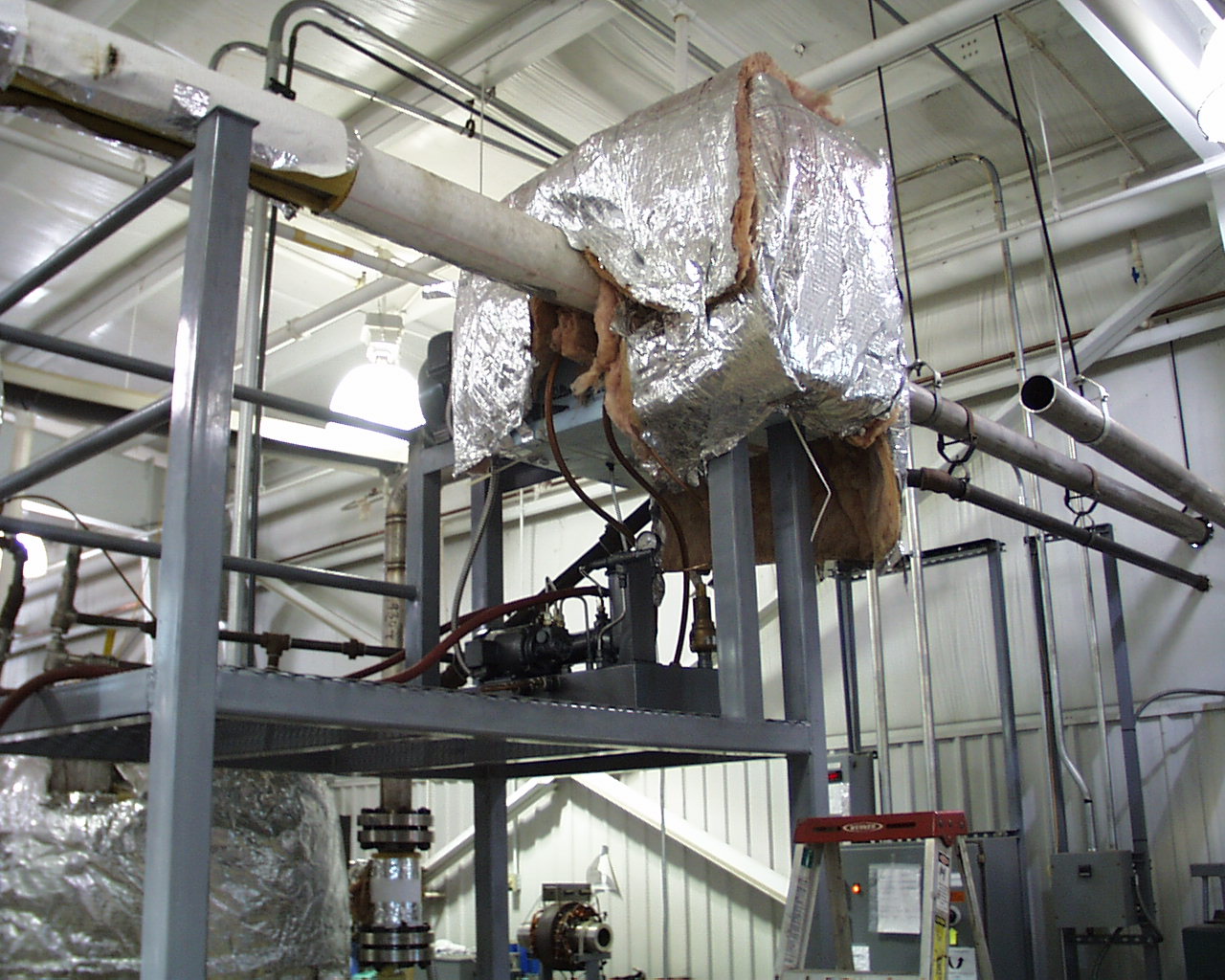 |
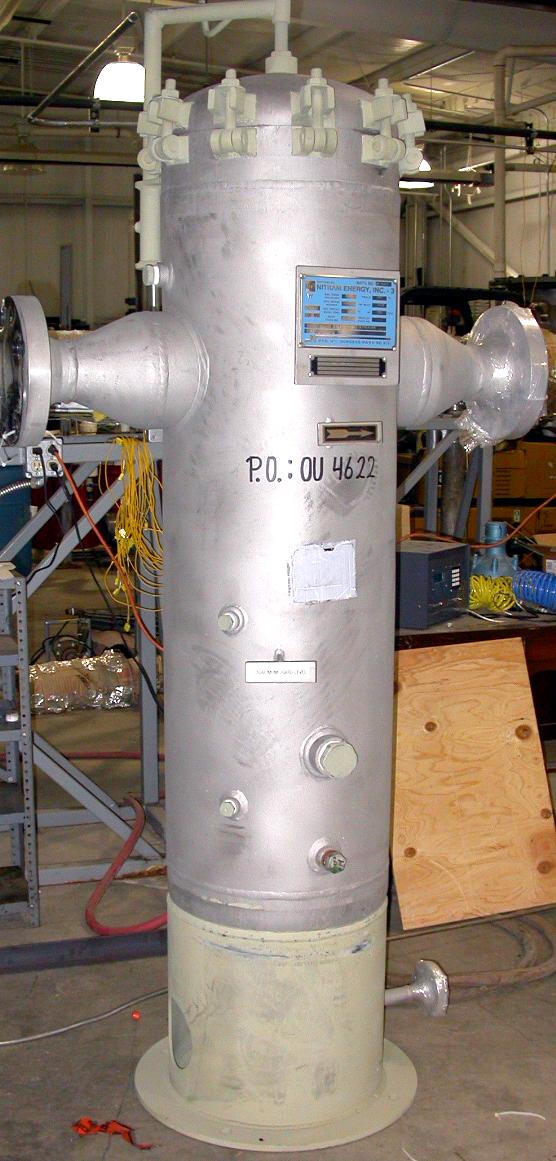 |
| Full View |
Test Section |
Blower |
Gas/Liquid Separator |
| Operational Conditions |
| Gas Velocity |
1 to 20 m/s |
| Partial pressure of Carbon Dioxide |
1 to 8 bar |
| Temperature range |
40°C to 90°C |
| Condensation rate |
0.02 to 3 ml/m2/s |
| Gas Mixtures |
Various mixtures of Nitrogen, Carbon Dioxide |
The Wet Gas Corrosion Flow Loop is designed to study the effect of operating parameters on the corrosion of carbon steel
under dewing condition during the transportation of wet gas. Several corrosive gases such as CO2 and HAc are under investigation.
This loop also provides a mean to quantify the efficiency of volatile inhibitors.
This closed system is comprised of 4" diameter, Sch 40, Stainless steel 316 for resistance to corrosion. It is 30 meters
long, horizontally leveled, and it is fully insulated from the ambiant. The tank used for liquid storage contains 1m3 of water. The
concentration of acid present in the water is controlled by injection. Heat is added to the system using resistance-heaters (Inconel© 625), which
are immersed in the tank. The power available is 90kW. A blower provides gas velocities up to 20 m/s. A system of cooling coils is used for the
cooling of the gaseous phase, allowing condensation to occur. A gas/liquid separator is used also to catch any liquid carry-over before the test
section. The test section provides 4 ports, 2 at the top of the line and 2 at the bottom of the line, which are available for the measurement of
the corrosion rate by insertion of flush-mounted corrosion monitoring probes.
Instrumentation
The temperature is controlled by a Proportional Integrator Differential (P.I.D) regulator (+/- 1°C). Monitoring of the
temperature occurs in the gas phase all around the 30-meter-long loop, between the inlet and the outlet of the heat exchangers (both in the gas
phase and in the cooling liquid), and at the wall temperature (by a thermocouple installed in the head of a flush-mounted probe). The pressure in
the tank is controlled (+/- 0.1 psi). The volume of condensed water is measured after being separated from the gas phase. Ceion Technology (E.R.
probes) is presently used to measure the corrosion rate in low conductivity-discontinuous condensed water
return to top
Wet Gas Corrosion Flow Loop #2
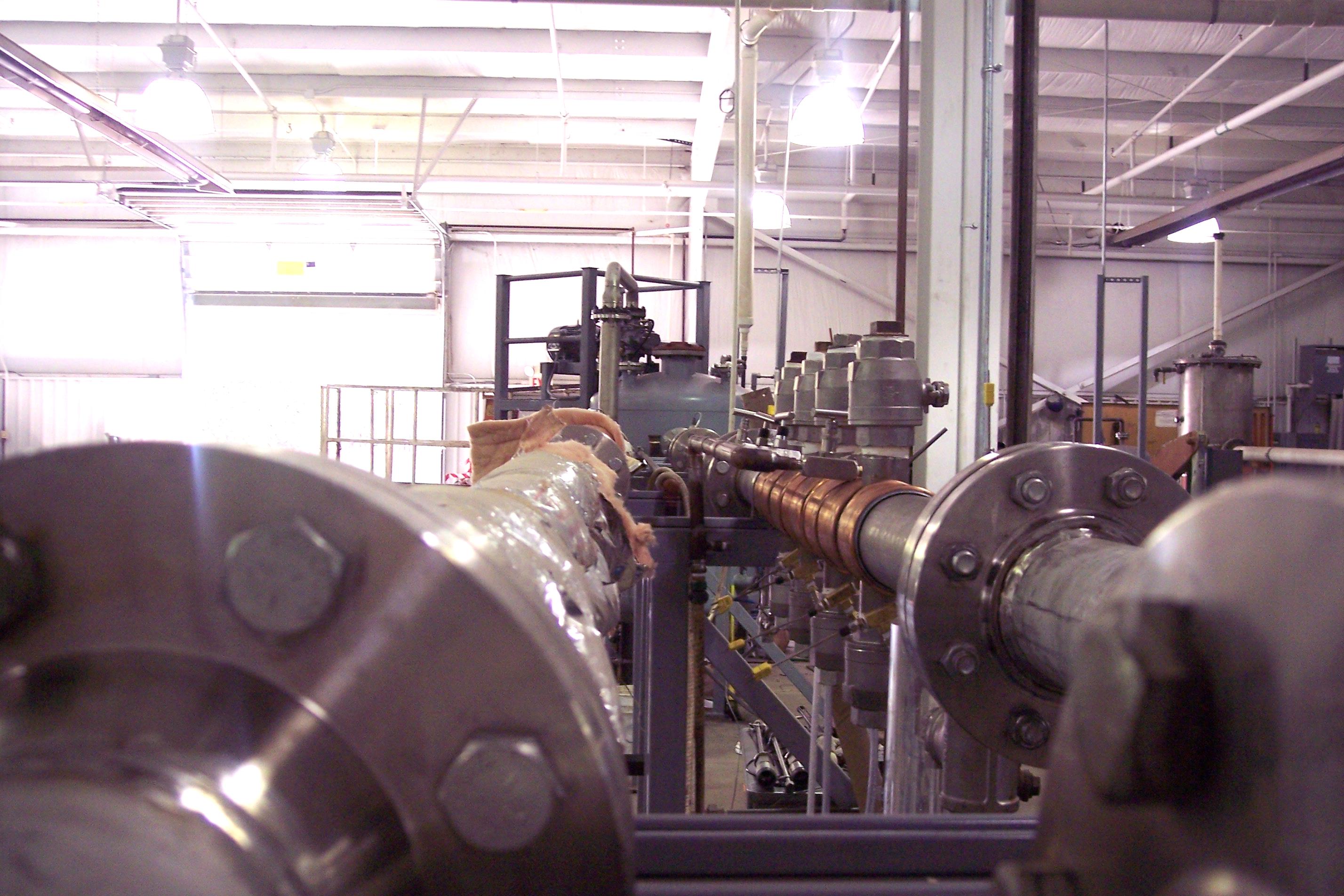 |
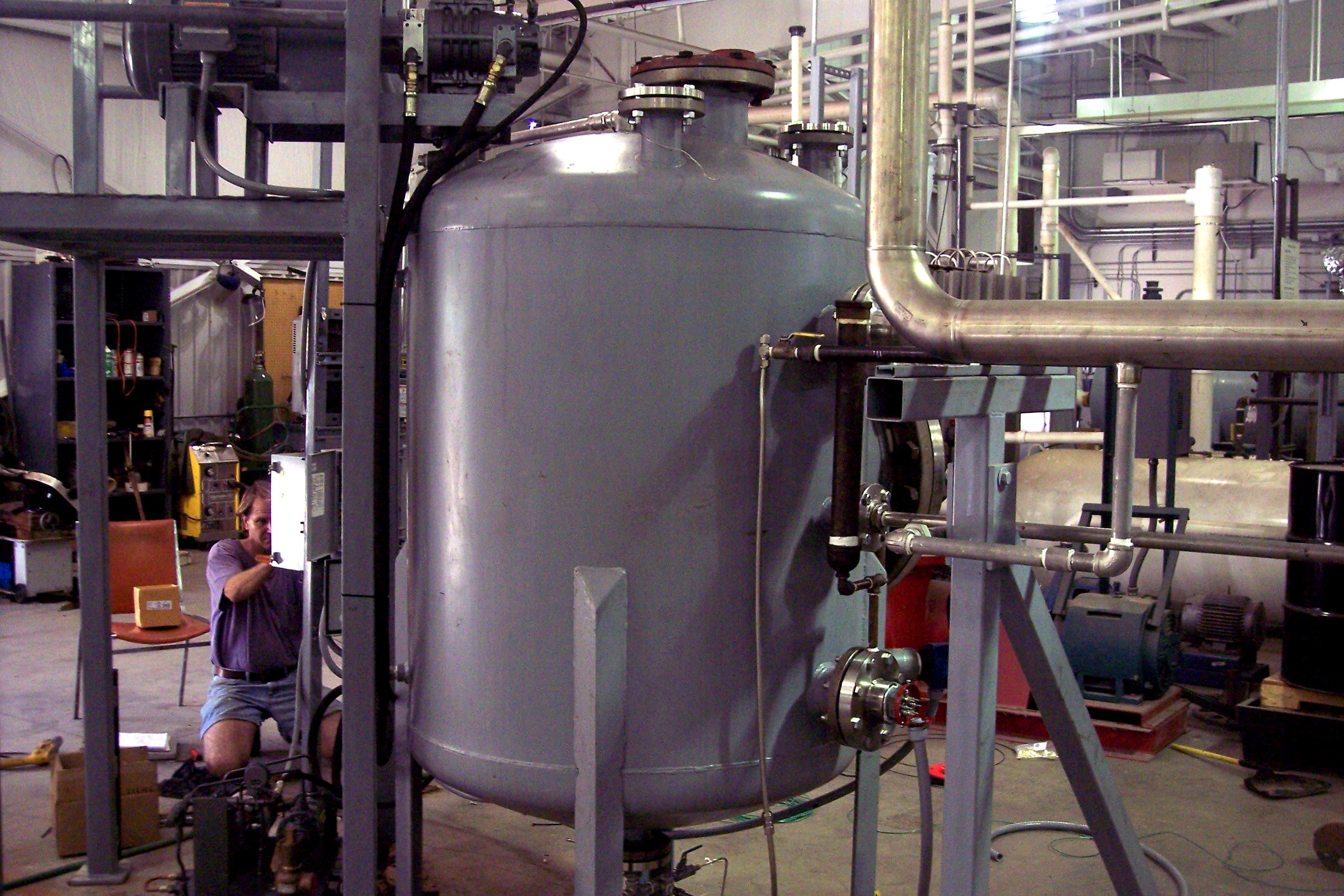 |
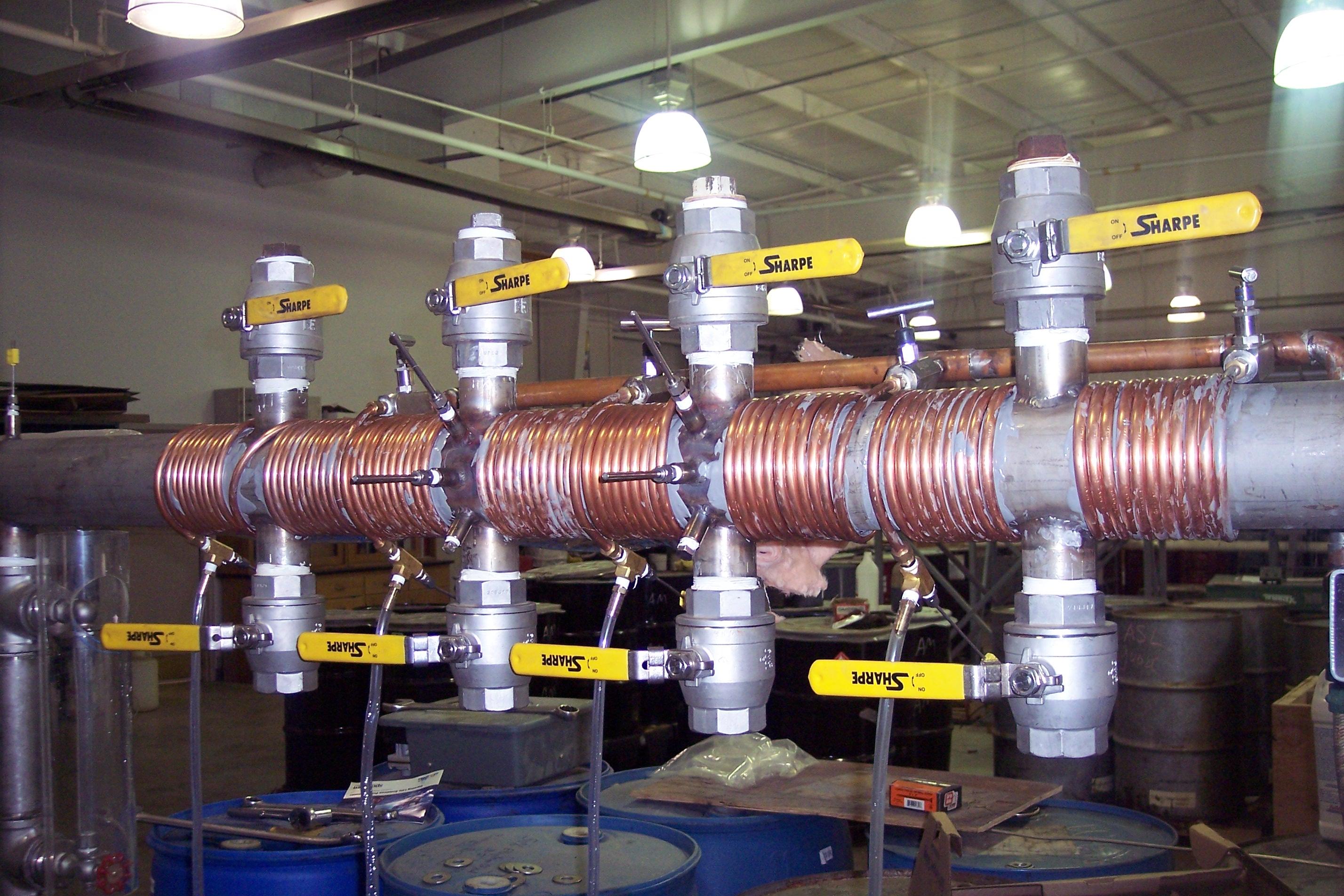 |
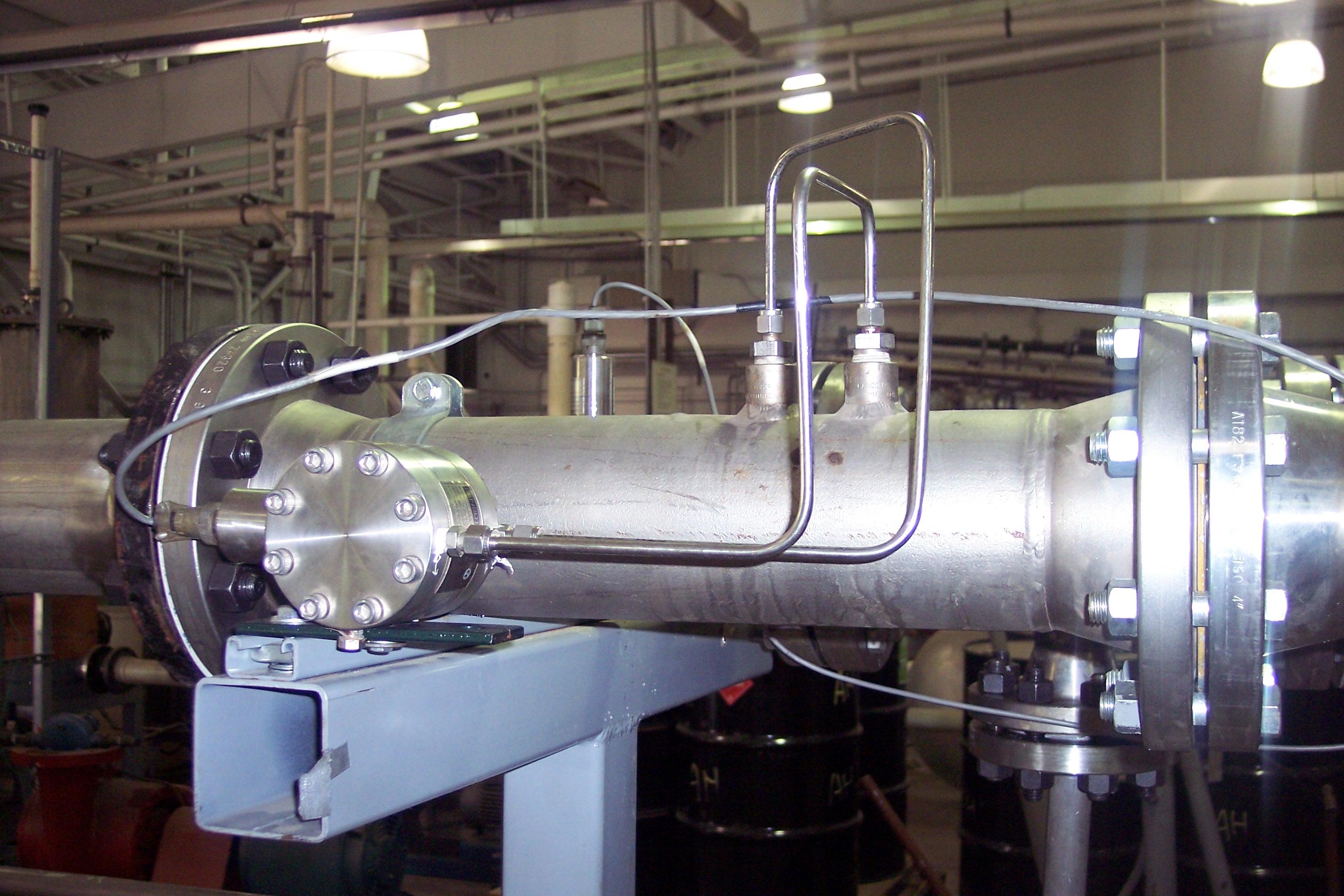 |
| Full View |
Tank and Blower |
Test Section |
Gas Flow Meter |
| Operational Conditions |
| Gas Velocity |
1 to 12 m/s |
| Partial pressure of Carbon Dioxide |
1 to 7 bar |
| Temperature range |
40°C to 80°C |
| Condensation rate |
0.02 to 3 ml/m2/s |
| Gas Mixtures |
Various mixtures of Nitrogen, Carbon Dioxide |
The Wet Gas Corrosion Flow Loop #2 is designed to study the effect of operating parameters on the corrosion of carbon steel
under dewing condition during the transportation of wet gas. Several corrosive gases such as CO2 and HAc are under investigation. This
loop also provides a mean to quantify the efficiency of volatile inhibitors.
This closed system is comprised of 4" diameter, Sch 40, Stainless steel 316 for resistance to corrosion. It is 25 meters long,
horizontally leveled, and it is fully insulated from the ambiant. The tank used for liquid storage contains 1m3 of water. The
concentration of acid present in the water is controlled by injection. Heat is added to the system using resistance-heaters, which are immersed
in the tank. The power available is 11kW. A blower provides gas velocities up to 12 m/s. A system of cooling coils is used for the cooling of the
gaseous phase, allowing condensation to occur. The test section provides 8 ports, 4 at the top of the line and 4 at the bottom of the line, which
are available for the measurement of the corrosion rate by insertion of flush-mounted corrosion monitoring probes.
Instrumentation
The temperature is controlled by a Proportional Integrator Differential (P.I.D) regulator (+/- 1°C). Monitoring of the
temperature occurs in the gas phase all around the 25-meter-long loop, between the inlet and the outlet of the heat exchangers (both in the gas
phase and in the cooling liquid), and at the wall temperature (by a thermocouple installed in the head of a flush-mounted probe). Moreover, a
system of thermistors is installed at the test section in order to monitor the temperature of the gas, the inner wall and the outer wall (+/-
0.1°C). The pressure in the tank is controlled (+/- 0.1 psi). A gas flow meter is installed in line and is used to monitor and control the gas
velocity. The volume of condensed water is measured after being separated from the gas phase. Ceion Technology (E.R. probes) is presently used to
measure the corrosion rate in low conductivity-discontinuous condensed water.
[return to top]
| 



